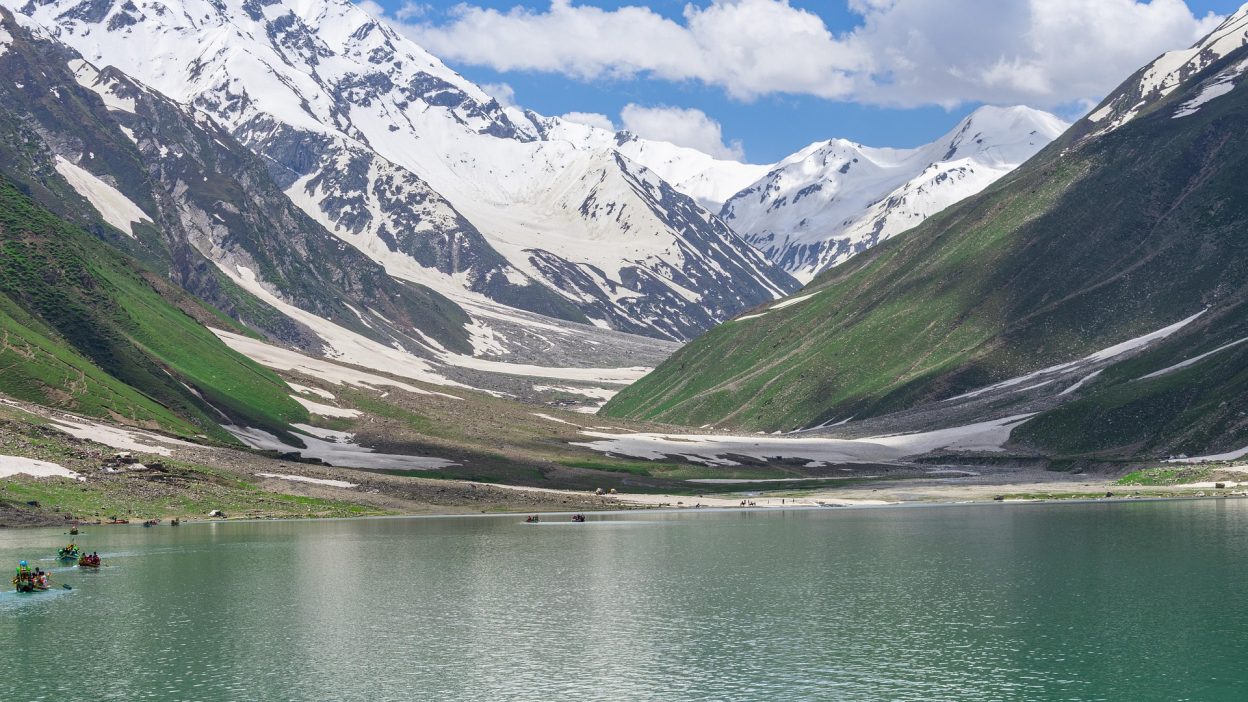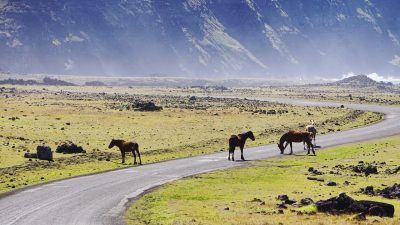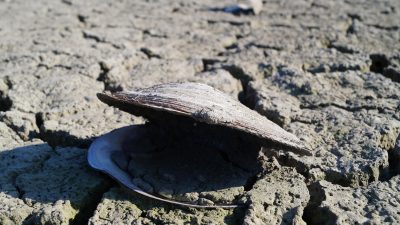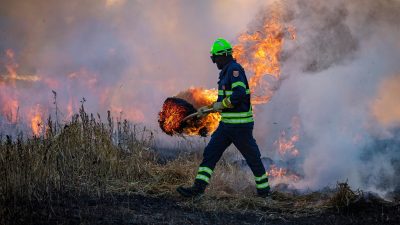2008 Balochistan Earthquake Tragedy: What Happened And How Pakistan Recovered
Introduction: The Night Pakistan Trembled
At 3:50 AM on October 29, 2008, while most of Pakistan slept, the earth beneath Balochistan shook violently. A 6.4 magnitude earthquake struck the province, with its epicenter near Ziarat, a picturesque valley known for its ancient juniper forests. Within just 30 seconds, villages crumbled, houses collapsed, and lives were lost in an instant. The earthquake, followed by powerful aftershocks of 6.2 magnitude, left behind a devastating trail of destruction.
More than 215 people lost their lives, and over 200 were severely injured. Entire families were buried under the rubble, with many perishing in their sleep. The hardest-hit areas were Ziarat, Pishin, and Qila Saifullah, where over 15,000 homes were reduced to ruins, leaving up to 120,000 people homeless. The icy cold weather of Balochistan made survival even harder, as thousands of displaced families struggled without shelter, food, or clean water.
Rescue teams, including the Pakistan Army, NDMA, and international aid organizations, rushed to the scene. However, due to the remote mountainous terrain, many areas remained inaccessible for days. Relief efforts were further hindered by damaged roads, landslides, and freezing temperatures. The international community, including the UN, Red Cross, and China, provided aid, but challenges in distribution led to delays.
The 2008 Balochistan earthquake was a stark reminder of Pakistan’s vulnerability to seismic disasters. Though smaller in scale compared to the 2005 Kashmir earthquake, it exposed the lack of earthquake-resistant infrastructure and the need for better disaster management planning. The tragedy left a lasting impact, reshaping policies and raising urgent questions: Is Pakistan prepared for the next big earthquake?
2. When & Where Did It Strike? (Date, Time, Epicenter)
- Exact Date & Time of the Earthquake
The 2008 Balochistan earthquake struck at 3:50 AM on October 29, 2008. This was the precise moment when the earth’s crust shifted beneath Pakistan, causing a violent jolt that woke up the sleeping region. The timing of the earthquake, in the dead of night, meant that many people were caught off-guard, with no opportunity to escape or prepare. The night’s tranquility was shattered in mere seconds, and the earthquake’s suddenness made it difficult for many to react. - Epicenter Location
The earthquake’s epicenter was located near the town of Ziarat, which is around 133 kilometers (83 miles) from the provincial capital, Quetta. Ziarat, known for its stunning juniper forests and cool climate, was one of the hardest-hit areas. The tremors were felt across large parts of Balochistan and even in neighboring areas of Afghanistan, but the devastation was most severe in the Ziarat, Pishin, and Qila Saifullah districts. The proximity of these towns to the epicenter resulted in massive destruction of homes and buildings. - Magnitude & Depth of the Earthquake
The earthquake registered a magnitude of 6.4 on the Richter scale. This intensity is considered strong enough to cause significant damage, particularly in populated or poorly constructed areas. The earthquake occurred at a depth of approximately 10 km (6.2 miles), which is relatively shallow. Shallow earthquakes tend to cause more damage because the energy released by them is concentrated closer to the Earth’s surface. This is why the impact was so devastating, with widespread collapse of buildings, especially in areas that were not well-prepared for such a disaster. - Aftershocks and Secondary Effects
After the initial shock, powerful aftershocks followed, with the largest recorded at 6.2 magnitude. These aftershocks made rescue and relief operations even more difficult. The continuous shaking caused additional structural damage to already weakened buildings, and fear of more aftershocks added to the distress of survivors. Additionally, many of the remote villages were struck by landslides triggered by the tremors, further isolating the affected regions and hampering efforts to reach victims.
3. The Science Behind the Disaster: Why Did It Happen?
The 2008 Balochistan earthquake occurred due to tectonic movements along the fault lines in the region, specifically the Chaman Fault. This fault line is part of the complex system of geological forces caused by the interaction between the Indian Plate and the Eurasian Plate. These two massive plates are constantly moving, with the Indian Plate pushing northward and the Eurasian Plate shifting southward. Over time, this movement has caused significant stress to build up along the fault lines in Balochistan and neighboring areas, which eventually resulted in the release of energy in the form of an earthquake.
The Chaman Fault, which runs along the border between Pakistan and Afghanistan, is one of the major seismic zones in this region. It is a strike-slip fault, meaning that the plates slide past one another horizontally. This kind of movement generates large amounts of energy, which is released in the form of earthquakes. The shallow depth of the earthquake, approximately 10 km beneath the Earth’s surface, also played a critical role in its devastating impact. Shallow earthquakes tend to cause more severe shaking and destruction because the seismic waves travel more directly to the surface.
Additionally, the region of Balochistan lies at the convergence of several geological zones, making it particularly vulnerable to earthquakes. The Himalayan seismic activity, due to the collision of the Indian and Eurasian plates, extends into Pakistan and affects the entire region. As a result, areas like Balochistan experience frequent seismic activity, including tremors and larger quakes, especially along the fault lines like the Chaman Fault.
In summary, the earthquake was the result of natural tectonic processes that have been shaping the region for millions of years. The collision of tectonic plates, combined with the shallow depth of the earthquake and the movement along the Chaman Fault, led to a violent release of energy that caused widespread destruction and loss of life. This is a clear reminder of the constant geological forces at play beneath the Earth’s surface, which can lead to sudden and devastating natural disasters.
4. The Impact: Devastation in Numbers
- Casualties
The 2008 Balochistan earthquake resulted in the tragic loss of over 215 lives, with more than 200 people injured. The majority of casualties were in the Ziarat, Pishin, and Qila Saifullah districts, where the earthquake’s impact was most severe. The quick and powerful tremor caused buildings and homes to collapse, trapping families under rubble, and leaving little time for escape. Hundreds of people, especially in rural areas, were unable to get the medical help they needed in time, contributing to the high death toll. - Destruction of Infrastructure
The earthquake caused massive damage to infrastructure across the affected areas. Over 15,000 homes were completely destroyed, leaving thousands of families homeless in freezing temperatures. Buildings in cities like Quetta also suffered structural damage, though the rural areas of Balochistan took the brunt of the destruction. In addition to homes, essential roads, bridges, schools, hospitals, and water supply systems were also severely damaged or destroyed. The collapse of roads and bridges made it difficult for relief teams to access the most affected regions quickly, hindering immediate response efforts. - Economic Losses
The economic impact of the earthquake was staggering. The total estimated damages exceeded $20 million, including the cost of rebuilding homes, schools, hospitals, and other essential infrastructure. Beyond physical infrastructure, the destruction of crops, livestock, and agricultural land worsened the economic strain on families, many of whom depended on farming as their primary source of income. The long-term economic recovery was also slowed by the ongoing instability and the difficulty in reaching affected areas. - Affected Areas and Population
The earthquake primarily affected the Balochistan province, particularly the Ziarat, Pishin, Qila Saifullah, and surrounding districts. These areas, which are home to a significant portion of Pakistan’s population, were left in a state of chaos, with many villages completely flattened. In total, over 120,000 people were displaced by the disaster, many of whom were forced to live in makeshift shelters without basic necessities. Even larger cities like Quetta experienced considerable damage, though they had better infrastructure and more immediate access to aid. - Comparison with the 2005 Kashmir Earthquake
While the 2005 Kashmir earthquake was a more devastating and larger-scale disaster, the 2008 Balochistan earthquake still caused significant destruction. The 2005 quake, with a magnitude of 7.6, affected millions and caused over 80,000 deaths. However, the 2008 Balochistan earthquake showed that even a 6.4 magnitude earthquake could cause substantial damage in vulnerable areas. Despite the smaller scale, the high population density in the affected areas and the lack of earthquake-resistant infrastructure meant that the impact was still catastrophic.
5. The Human Tragedy: Heart-Wrenching Stories
The 2008 Balochistan earthquake left behind stories of both despair and resilience. In Ziarat, a family of five was trapped under the rubble of their collapsed house. The father, miraculously found alive after being buried for over 24 hours, dug through the debris with his bare hands to free his two young children. Sadly, his wife and another child were not as fortunate.
In Pishin, a young girl named Amina, only 10 years old, was rescued after being stuck under the ruins of her school for two days. She was severely injured but survived, becoming a symbol of hope and survival amidst the chaos. Her story spread across Pakistan, inspiring countless people to help with relief efforts.
Meanwhile, in Qila Saifullah, an elderly couple was separated when their house collapsed. The husband was found alive but was heartbroken as he held onto the belief that his wife had not survived. Two days later, an amazing twist of fate reunited them in a hospital, where she had been rescued and treated for injuries.
These personal stories, filled with both grief and hope, reflected the true human cost of the disaster, underscoring the pain, the survival instinct, and the resilience that emerged from one of the worst tragedies in Balochistan’s history.
6. Government & Army Response: How Pakistan Reacted
The government of Pakistan faced significant challenges in responding to the 2008 Balochistan earthquake. Initially, the response was slow, as the affected regions were remote and lacked proper infrastructure. Communication networks were down, and roads leading to the worst-hit areas were either blocked or severely damaged by landslides. As a result, it took time for the National Disaster Management Authority (NDMA) and local authorities to mobilize resources and reach the victims. However, once the gravity of the situation became clear, the Pakistan Army played a crucial role in the relief efforts. The military deployed thousands of personnel to assist in rescue operations, providing medical aid, relief supplies, and setting up temporary shelters for displaced families. The army also helped clear roads and rescue trapped survivors, showing a high level of coordination and efficiency. Despite some early delays, the government, supported by the army, eventually began distributing aid, although challenges in logistics and remote terrain slowed down the process. The earthquake highlighted the need for a more robust disaster response system, and in its aftermath, the government took steps to improve future preparedness.
7. International Aid & Relief Efforts
In the aftermath of the earthquake, the international community quickly rallied to support Pakistan. Countries like China, Turkey, and the United States were among the first to offer assistance, sending rescue teams, relief supplies, and financial aid. The United Nations, Red Cross, and World Health Organization (WHO) also provided critical support, coordinating with Pakistan’s government to distribute food, water, and medical supplies. Humanitarian organizations set up field hospitals and mobile clinics to treat the wounded, especially in remote areas that had been cut off from regular healthcare services. Despite the timely international support, the relief efforts were often hindered by logistical challenges such as difficult terrain and poor infrastructure. In some instances, aid delivery was delayed, and there were complaints about the inefficiency of aid distribution, especially in hard-to-reach villages. Despite these challenges, the international aid made a significant difference in alleviating the immediate suffering and helping communities begin their recovery.
8. The Challenges Faced in Rescue Operations
Rescue operations in the wake of the 2008 earthquake were hampered by several daunting challenges. The remote mountainous terrain of Balochistan, combined with damaged roads and landslides, made it extremely difficult for rescue teams to access the hardest-hit regions. Even once teams were able to reach affected areas, the sheer scale of destruction and the number of collapsed buildings made it a monumental task to rescue survivors. In many cases, rescue workers had to rely on basic tools and their bare hands to dig through rubble, while heavy machinery was often unavailable due to the damaged roads. The freezing winter temperatures further complicated rescue efforts, with many survivors enduring harsh conditions while waiting for help. Additionally, there were reports of looting in some areas, which not only hindered relief distribution but also created additional risks for both survivors and aid workers. Despite these obstacles, the efforts of the Pakistani army, local authorities, and international teams were instrumental in saving lives and beginning the long road to recovery.
10. Long-term Impact: Recovery and Rebuilding
- Rebuilding Efforts
In the aftermath of the earthquake, the rebuilding process was slow and challenging due to the extensive damage to infrastructure and homes. Over 15,000 homes were destroyed, and while some families managed to rebuild their homes with the help of government and international aid, many were forced to live in temporary shelters for months. Rebuilding efforts were further delayed by the remote terrain and the harsh winter conditions. Newly constructed homes were often designed to be more earthquake-resistant, but the sheer scale of the disaster meant that it took years for full recovery in many areas. - Economic Impact and Losses
The economic consequences of the earthquake were significant. Agriculture, the primary livelihood for many in the region, was severely affected. Crops and livestock were destroyed, leading to food shortages and financial strain for families already struggling with displacement. The economic loss was estimated to be over $20 million, and the long-term recovery process meant that the region took years to fully stabilize economically. Additionally, the cost of rebuilding infrastructure such as roads, schools, and hospitals was a heavy burden on both the government and international donors. - Psychological Impact
Beyond the physical destruction, the earthquake left deep psychological scars on survivors. Families who lost loved ones or saw their homes destroyed faced long-term emotional challenges. Many children were traumatized by the loss of parents or their homes, and in some cases, entire villages were affected. The community faced not only the difficult process of rebuilding homes but also the emotional and mental toll of the disaster. Support for mental health services and psychological counseling became an important part of the recovery process, though access was limited due to the remote nature of the affected areas. - Policy Changes and Earthquake Preparedness
In the wake of the disaster, the government of Pakistan took significant steps toward improving the country’s earthquake preparedness. New policies were introduced to strengthen building codes, and there was a push for public awareness regarding earthquake safety. Efforts were also made to improve disaster response systems, including better coordination between national and international relief agencies. While some progress was made, there is still a long way to go in ensuring that all areas of Pakistan are prepared for future seismic events. - Lessons Learned
The 2008 Balochistan earthquake served as a wake-up call for Pakistan regarding the need for better disaster management and infrastructure. Key lessons learned from the tragedy include the importance of earthquake-resistant infrastructure, the need for quick-response teams, and the critical role of early warning systems. The earthquake also highlighted the importance of community preparedness and local training, as communities that were better equipped to respond were able to recover faster. These lessons have since been incorporated into national and local disaster management strategies, but there remains a constant need to update and refine disaster preparedness plans.
11. Media Coverage: How the World Watched
The media coverage of the 2008 Balochistan earthquake played a crucial role in raising awareness about the disaster both within Pakistan and around the world. Local and international news outlets quickly reported on the earthquake’s devastating impact, with images of collapsed buildings, displaced families, and rescue operations dominating television screens and newspapers. Pakistani news channels, as well as international networks like BBC and Al Jazeera, provided continuous coverage, giving the world an up-close view of the destruction in Ziarat, Pishin, and Qila Saifullah. The media’s role extended beyond reporting the facts; it also helped mobilize humanitarian aid by highlighting the urgent needs of survivors and prompting donations and support from both individuals and organizations. Social media, though still in its early stages, also played a part in spreading information, with people using platforms like Twitter and Facebook to share updates and raise awareness. While the media coverage was instrumental in the immediate aftermath, it also helped draw attention to the region’s ongoing challenges, ensuring that the rebuilding process remained on the global radar. The coverage of the earthquake highlighted the power of media in disaster response, though it also raised questions about the adequacy of reporting on long-term recovery efforts and sustained coverage of post-disaster issues.
12. The Role of Local Communities: Resilience Amid Crisis
The local communities affected by the 2008 Balochistan earthquake demonstrated extraordinary resilience in the face of overwhelming adversity. In many villages, people worked together to clear rubble, search for survivors, and provide basic care to the injured, despite having lost their own homes and possessions. In some cases, local residents acted as the first responders, providing immediate help before professional rescue teams could arrive. The strength of community ties played a significant role in the survival and recovery of many families. For instance, in Ziarat, where the damage was extensive, neighbors who survived dug through the ruins of collapsed homes, pulling out victims and offering food, water, and shelter to the displaced. Despite the lack of resources, these communities showed a remarkable ability to support one another and rebuild their lives, often relying on their own means and ingenuity. Religious institutions like mosques and madrasas also played a central role in providing shelter, food, and emotional support. Additionally, local community leaders helped coordinate efforts, ensuring that aid reached those who needed it most. The spirit of self-help, combined with the support of the wider nation and international aid, contributed to the recovery process. This collective strength and determination in the face of crisis were a testament to the resilience of Balochistan’s people, who refused to be defeated by the tragedy and instead found ways to rebuild and move forward.
FAQs
- 1. What was the magnitude of the 2008 Balochistan earthquake?
The earthquake registered a magnitude of 6.4 on the Richter scale and struck Ziarat, Balochistan, on October 29, 2008. - 2. How many people died in the 2008 Balochistan earthquake?
Over 215 people lost their lives in the earthquake, with more than 200 people injured, primarily in the most affected districts like Ziarat, Pishin, and Qila Saifullah. - 3. What were the main challenges faced during the rescue operations?
Rescue teams struggled with remote mountainous terrain, damaged infrastructure, and landslides, which made it difficult to access affected areas. Additionally, freezing temperatures and logistical issues further delayed relief efforts. - 4. How did the Pakistani government respond to the earthquake?
The Pakistani government, with support from the Pakistan Army, launched rescue and relief operations, providing medical aid, temporary shelters, and clearing roads to ensure aid could reach the worst-hit areas. However, early responses were delayed due to communication breakdowns and infrastructure damage. - 5. How did international aid contribute to the recovery?
Countries like China, Turkey, and the U.S. provided rescue teams, financial aid, and humanitarian supplies, while organizations like the UN and Red Cross set up field hospitals and distributed food and medical supplies, helping millions of affected individuals.
Resources:
United Nations Office for the Coordination of Humanitarian Affairs (OCHA) – Balochistan Earthquake Response Plan 2008
ReliefWeb – Earthquake in Balochistan, Pakistan: Health Situation Report No. 1
Wikipedia – 2008 Ziarat Earthquakes
GeoscienceWorld – Building Vulnerability and Damage during the 2008 Balochistan Earthquake
GlobalGiving – Earthquake Recovery for 70,000 People in Pakistan
International Federation of Red Cross and Red Crescent Societies (IFRC) – Response to Balochistan Earthquake
YT Links:
Pakistan quake catastrophe – 29 Oct 08
Aid pleas from Pakistan earthquake survivors – 13 Nov 08
PICS:




